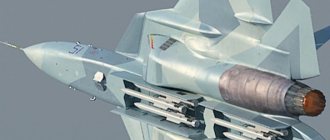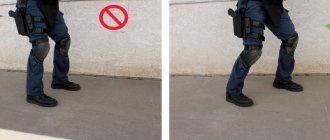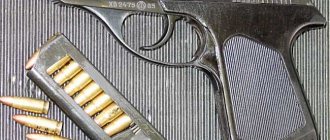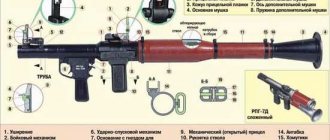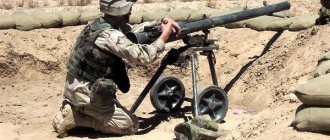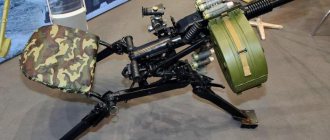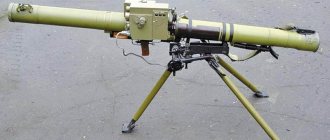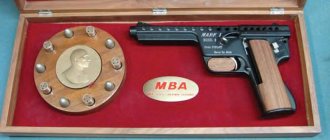- Single-shot and under-barrel grenade launchers
- Automatic grenade launchers
- Anti-tank grenade launchers
A grenade launcher is a firearm designed to fire a grenade - a projectile filled with an explosive or other filler, for example an incendiary or smoke mixture, an irritant gas, etc. In addition to the body and combat equipment (explosives), the grenade is usually equipped with a fuse and certain safety devices. The simplest way to use a grenade is to throw it with your hand, but this method greatly limits both the weight of the grenade and the range of its throw. Therefore, even at the dawn of the creation of firearms, the so-called “hand mortars” were created - large-caliber muzzle-loading smoothbore guns with a very short barrel that fired an explosive grenade at a distance inaccessible for throwing by hand. During the First World War, to expand the combat capabilities of the infantry, so-called rifle grenade launchers
- special attachments for a standard army rifle.
An ordinary hand or special grenade was inserted into such a nozzle, which was then fired towards the enemy using a special blank cartridge. This system had a significant drawback - the barrel attachment, usually in the form of a glass, worsened the balance of the rifle and often blocked the aiming line. The simplest solution to the problem of attachments was the use of ramrod rifle guarantors
. In such systems, a long thin rod was attached to the back of the grenade, which was inserted directly into the barrel of the weapon before firing. The grenade was also fired with a blank cartridge, while the rod served as a stabilizer for the grenade in flight.
German Mauser K98k carbine from the Second World War with a rifle grenade launcher mounted on the barrel.
However, the use of ramrod grenades also had its drawbacks - such grenades were less convenient to handle and carry, so a modern type of rifle grenade launcher was developed, which has the form of a cylindrical muzzle attachment, which usually also combines the role of a flame arrester for a rifle. The grenade for such a grenade launcher has a tubular shank that fits directly onto the muzzle of the rifle. Since an attempt to launch an old-style rifle grenade using a conventional cartridge with a bullet almost always ended disastrously for a weapon. and for the shooter, in the post-war period rifle grenades were developed that could be launched using conventional live (rather than blank) cartridges. Such grenades either have a through channel in the center, through which the bullet passes through when fired (designation “ bullet through”
), or have a special trap in which the bullet gets stuck, giving the grenade an additional impulse (designation “
bullet trap
”).
However, even such grenades retained the main drawback of all muzzle grenade launchers - with a grenade ready to fire, the shooter was deprived of the opportunity to fire his weapon in a normal manner without first firing or removing the grenade from the barrel. The advantages of muzzle grenade launchers, which still provide them with a place in the weapons systems of many armies around the world, are the minimum dead weight on the weapon and the ability to use fairly large ammunition of various sizes and calibers.
A French soldier prepares to launch a rifle grenade from the barrel of a FAMAS assault rifle.
A modern rifle grenade on the barrel of a Yugoslav Zastava M70 assault rifle (a modified Kalashnikov assault rifle).
An alternative to muzzle grenade launchers were under-barrel grenade launchers, which were mounted, as the name suggests, most often under the barrel of a weapon and were actually a separate weapon with its own trigger mechanism, firing high-explosive fragmentation or other types of shots, and mounted on a rifle. The Americans began seriously developing under-barrel grenade launchers in the 1960s, during the Vietnam War. The Americans have developed a number of single-shot and multi-shot (including self-loading) grenade launchers of 30 - 40 mm caliber as part of the SPIW program. The most successful was the 40mm single-shot grenade launcher XM203, created by the American company Aircraft Armaments Inc (AAI), which was adopted by the US Armed Forces under the designation M203. It was used initially on the M16A1 rifles, and later on a number of other small arms from different countries. Similar systems were created in other countries, including the USSR, where an original design of a grenade with a “flying away” cartridge case was developed, which provided a significant advantage in the reloading speed of this weapon over its Western counterparts.
An American soldier with an M4 carbine equipped with an M203 40mm grenade launcher.
Various types of ammunition for 40mm grenade launchers used in NATO countries (M76, M203, NK69, etc.).
Soviet AK-74 assault rifle with a 40mm GP-25 grenade launcher.
Comparison of rifle and under-barrel grenade launchers mounted on Austrian Steyr AUG assault rifles.
The choice of one or another grenade launcher system for their troops varied in different countries - for example, in the USA and the USSR, preference in the post-war period was given to under-barrel grenade launchers, while, say, Belgium, France and Israel until recently preferred rifle grenade launchers. However, recently, apparently, under-barrel grenade launchers are becoming more preferable for infantry.
In the post-war period, individual grenade launchers equipped with their own stock and sighting devices, which were a direct development of the medieval “hand mortars,” gained a certain popularity. One of the first such systems was the German “kampfpistole” of the Second World War - signal pistols equipped with rifled barrels and detachable butts that fired special high-explosive fragmentation, armor-piercing and other grenades. In the initial period of the Vietnam War, the US Army widely used the 40mm single-shot M79 grenade launcher, the successful use of which became the impetus for the adoption of under-barrel grenade launchers. This is due to the fact that a soldier armed with an M79 (or its equivalent) needs an additional weapon for self-defense - a pistol, submachine gun or machine gun. Later, in a number of countries, multi-charge grenade launchers were created, using either the revolving principle or the principle of a pump-action weapon with a tubular magazine. However, such systems are primarily used either by special operations forces as support weapons or by police as a means of crowd control. In the latter case, grenade launchers are used with various "non-lethal" ammunition, such as rubber bullets or buckshot, tear gas grenades, etc. Often, grenade launchers for police purposes have a reduced caliber (for example, 37-38mm instead of 40mm), which precludes the use of “deadly” military grenades in police weapons. Moreover, in most cases, the use of 37mm police grenades in 40mm army weapons is quite possible.
German 40mm single-shot grenade launcher HK69.
Russian 43mm multi-shot grenade launcher GM-93. The tubular magazine is located above the barrel.
A drawing of a promising 40mm multi-shot grenade launcher from the Swedish company SAAB-Bofors, using a computerized sight and grenades with remote detonation.
Currently, the concept of an underbarrel grenade launcher is experiencing the next stage, when grenades are beginning to be equipped with remote electronic fuses, ensuring that the guarantors are detonated in the air at the target even in the event of a miss. Research and development in this direction is being carried out in the USA as part of the OICW program, in France as part of the PAPOP program and in a number of other countries. To ensure that such grenades are triggered precisely in the target area, grenade launchers or complex weapon systems are equipped with computerized sights. including a laser rangefinder and a ballistic computer.
Russian hand grenade launchers: the famous “seven” RPG-7
Success for Russian gunsmiths in this direction came only in 1961, when the RPG-7 hand-held anti-tank grenade launcher was created. It was he who brought Russia to a leading position in this type of weapons. Thanks to its high performance indicators, the RPG-7 has received recognition not only in our country, but throughout the world. If you believe some sources, a plant for the production of RPG-7 is currently being prepared to launch in the United States.
The Russian RPG-7 hand-held anti-tank grenade launcher is designed to disable enemy tanks, self-propelled artillery mounts, and other weapons. In addition, the RPG-7 can be used in urban combat, both to destroy shelters and manpower.
Structurally, the RPG-7 consists of a barrel (pipe and pipe), trigger and striker mechanisms, a fuse, mechanical (on the barrel) and optical sights.
The pipe and pipe of the Russian RPG-7 hand grenade launcher are rigidly fastened and serve not only to direct the shot, but also to remove powder gases. In another modification of this grenade launcher, RPG-7D, the pipe and pipe have a crack joint in the form of grooves on the pipe and corresponding protrusions on the pipe, which are fixed with latches. Thanks to this, the RPG-7D is more convenient when landing personnel or during forced marches over long distances. In addition, this modification has a modified safety mechanism, which eliminates the possibility of an accidental shot if the connection between the pipe and the barrel nozzle is not tight.
The RPG-7 is still one of the best grenade launchers in the world, and is not inferior in its characteristics to more modern models. Russian grenade launchers: RPG-18 “Mukha” This is the first domestic disposable grenade launcher. Based on the results of tests in 1971, the RPG-18 anti-tank rocket grenade system was adopted by the Soviet Army.
The “Mukhi” device consists of a telescopic structure that has an outer and an inner pipe. The first is made of T13 fiberglass, and the second is made of aluminum alloy. The RPG-18 can be fired at a distance of 50 to 200 meters.
Russian grenade launchers
Hand-held anti-tank grenade launcher "RPG-7", Designed to combat tanks, self-propelled artillery mounts and other armored vehicles of the enemy. In addition, it can be used to destroy enemy personnel located in light field shelters, as well as in urban structures. The grenade launcher consists of a barrel with a mechanical sight, a trigger mechanism with a safety catch, a firing pin mechanism and an optical sight. The barrel of a grenade launcher consists of a pipe and a pipe and serves to direct the flight of the grenade and remove powder gases when fired. For the RPG-7 grenade launcher, the pipe and pipe are rigidly connected, while for the RPG-7D they are rigidly connected, using the sector protrusions of the pipe, the corresponding pipe recesses, and are secured in assembled form with a latch. This design allows the grenade launcher to be disassembled and folded in preparation for landing. In addition, the RPG-7D grenade launcher has an additional translator with a lever and a spring, an insert and a pin added to the trigger mechanism, and the design of the fuse has also been changed, which eliminates the possibility of a shot in the event of an incomplete connection of the barrel tube with the branch pipe. For a grenade launcher with a night sight, a light-blocking mechanism is additionally introduced, which prevents the sight from being illuminated by the flame of its own shot.GRENADE LETTER RPG-18 "Mukha" In 1971, field tests of the first domestic disposable system - the RPG-18 "Mukha" rocket-propelled anti-tank grenade were carried out. Based on the results of field and military tests, the RPG-18 "Mukha" rocket-propelled anti-tank grenade was adopted by the Soviet Army in 1972. The RPG-18 grenade was intended to replace hand-held anti-tank cumulative grenades of the RKG-3 type in order to enhance the fire capabilities of rifle units in the fight against enemy armored vehicles. The grenade launcher is a smooth-walled telescopic structure consisting of outer and inner pipes. The upper tube is made of T13 glass fabric impregnated with EP-5122 varnish. The inner tube is made of aluminum alloy 65KhZD1T or 65KhZAMg6M. The sighting device consists of a spring-loaded front sight and diopter. The front sight has a frame into the grooves of which the front sight itself is inserted, which is a transparent glass with stamps and numbers printed on it <5>, <10>, <15>, <20>, which correspond to firing ranges of 50, 100, 150 and 200 meters (at one of the first versions of the RPG-18 used a metal sighting bar).
GRENADE LAUNCHER RPG-26 <Aglen> Disposable grenade launcher, designed to combat tanks, infantry fighting vehicles, self-propelled artillery units and other armored enemy targets. In addition, a rocket-propelled anti-tank grenade can be used to destroy enemy personnel located in shelters, as well as in urban structures. When designing the RPG-26, it was planned to implement a number of new technical solutions, which would make it possible to create single-tube launchers from fiberglass without a nozzle, replacing metal rubber covers, provide the ability to transfer the system from the traveling position to the combat position and back and, of course, increase the power of the grenade at the target. The starting device is a thin-walled pipe made of the same fiberglass as the RPG-18 and RPG-22 pipe. The USM safety rack is designed to cock the striking mechanism (the rack is raised up) and put it on safety (the rack is lowered down). In addition, the safety post is also a part of the sighting device - a diopter is installed on the post. The PU sighting device consists of a front sight and a diopter. The front sight has sighting marks marked with the numbers <5>, <15>, <250> (for shooting at 50, 150 and 250 meters, respectively) and rangefinder protrusions, the distances between which correspond to the projections of the width of the tank at these ranges. The diopter bears the following signs: <->, <+15> and <+> to introduce corrections for ambient temperatures below -15 Сњ, from -15 Сњ to +15 Сњ and above 15 Сњ. For shooting in conditions of limited visibility or when the target is illuminated by lighting means, the sighting device has a protrusion on the front sight and a cutout on the safety post. To fire a shot, "Aglen" must be placed on the shoulder and brought into a firing position, for which you turn the front sight up until it stops, pull the pin out of the trigger and raise the safety post up until it stops.
GRENADE LAUNCHER RPG-27 "Tavolga" The launcher "Tavolga" is a fiberglass pipe and is fundamentally no different from the RPG-26 launcher. The trigger and sighting devices of the Tavolga are similar in design to the RPG-26. The grenade launcher is transferred from the traveling position to the combat position and back in the same order as the RPG-26. The head of the PG-27 grenade is designed according to a tandem design. When encountering an obstacle, the front cumulative warhead is triggered first, initiating the explosive charge of the remote sensing device, and then, with a certain time delay, the main cumulative warhead is triggered. This scheme allows you to successfully fight almost all modern tanks equipped with remote sensing. Reactive engine charge made from 11/1 TR V/A gunpowder. The head of the grenade is equipped with explosives of the Okfol brand. After the completion of field tests in August 1988, the RPG-27 was submitted for military testing. In the conclusion on military tests, the commission proposed: “The RPG-27 “Meadowsweet” anti-tank grenade should be adopted by the Soviet Army as a freelance weapon along with the RPG-26 grenade.” As a result, the RPG-27 was adopted by the SA in 1989.
RPG-29 “Vampire” hand-held anti-tank grenade launcher In the late 80s. The RPG-29 hand-held anti-tank grenade launcher with the PG-29V round was developed and put into service. This is a modern weapon for a motorized rifle squad to destroy all types of modern tanks, armored and unarmored vehicles, as well as manpower in various types of defensive structures. The weapon, despite its significantly increased weight and size characteristics compared to the RPG-7, is simple and easy to use, reliable and trouble-free in any climatic conditions. The combat crew is two people. The grenade launcher is divided into two parts for ease of use. In the stowed position, both parts are placed in a special pack for carrying by one person. When brought into firing position, both parts are connected via a special connector. The grenade launcher is equipped with a trigger mechanism with a handle, a persistent folding bipod and a mechanical sight. The grenade launcher is equipped with an optical sight for firing in the daytime and a night vision device for firing at night. The PG-29V shot consists of a heavy-duty unit and a jet engine. TBC is unified with PG-7VR. The propellant charge of a jet engine burns completely within the length of the grenade launcher.
RG -6 hand-held revolving grenade launcher Already in the first quarter of 1994, a batch of six samples of a six-shot revolver-type grenade launcher was submitted for testing. The weapon was tested in combat in Chechnya, receiving positive reviews. The grenade launcher was given the designation RG-6. The design of the RG-6 (product index 6G30) is characterized by extreme simplicity and manufacturability, and consists of: - a pipe with a handle, sights and a cover; — drum block of barrels; — housing with an axle and a power rod; — trigger mechanism with pistol grip; - retractable telescopic butt. The entire structure is assembled on a body in the shape of a disc-shaped box with a tubular axis and a tubular rod. The axle is fitted with a helical winding spring that produces torsion. The barrel block includes six 40-mm “mortars”, united at the front by a bushing and at the rear by a plan washer with a ratcheting device. The bore of the “mortar” is similar to the GP-25 barrel and has 12 screw rifling. Unlike the GP-25, the barrel has a non-separable bottom with two holes: the firing pin is freely inserted into the central one, and the ejector rod is inserted into the side one.
Automatic easel grenade launcher AGS-17 “Flame” Automatic easel grenade launcher AGS-17 “Flame” was developed at KBTM named after. Nudelman and is produced by the Vyatsko-Polyansky Machine-Building Plant. It is designed to destroy enemy personnel and fire weapons located outside of shelters and behind natural folds of the terrain (ravines, hollows, reverse slopes of heights), etc. In the Russian Army, the AGS-17 is used not only from a machine gun. There is an aviation (helicopter) version with an electric trigger, which also differs from the infantry one in having a massive aluminum muzzle for more efficient cooling of the barrel during intense shooting. The AGS-17 is installed with the same muzzle in a turret mount on armored boats, but with a conventional mechanical release device. Recently, a number of promising domestic models of armored vehicles have appeared, where the AGS-17 is mounted on a turret. During the fighting in Afghanistan, AGSs were often welded to the armor of armored personnel carriers or infantry fighting vehicles, significantly increasing the firepower of the equipment, which made it possible to “get” the enemy in conditions when standard weapons turned out to be ineffective. Such an improvised complex in the mountains was especially helpful. For firing from a grenade launcher, 30-mm VOG-17M and VOG-30 rounds are used. The shot is a unitary cartridge consisting of a grenade with a fuse and a cartridge case with an igniter primer and a powder charge. When firing, the grenade launcher is powered from a metal strip containing 29 pieces, placed in a box, which in the firing position is attached to the right side of the grenade launcher. The USM allows you to fire both single shots and bursts. Firing from a grenade launcher can be carried out in both flat and mounted trajectories. Experience in combat operation of the AGS-17 has shown that the most effective is firing in short bursts of 3-5 shots. In this case, an experienced grenade launcher is able to adjust the fire based on the explosions of the first grenades and reliably hit the target, spending a minimum amount of ammunition. Maximum firing range 1700 m.
30 mm anti-personnel automatic grenade launcher system AGS-30 The small mass of the grenade launcher system (half the weight of its analogue AGS-17) with a significant ammunition load makes it possible to reduce the maintenance crew. The small dimensions of the complex and the design features of the machine provide the ability to quickly change the firing position and fire from window openings and unprepared positions. The grenade launcher uses serial shots VOG-17M, VOG-30. Technical characteristics Caliber, mm 30 Rate of fire, shot/min 400 Firing range, m up to 1700 Weight with machine without ammunition, kg 16 Weight of box with 30 shots, kg 13.7 Ammunition of the complex, pcs 90
Hand-held “sniper” grenade launcher TKB-0249 “Crossbow” The 30-mm hand-held “sniper” grenade launcher TKB-0249 “Crossbow” was developed by Valery Nikolaevich Telesh for serial shots VOG-17M (7P9) and VOG-30. The 30-mm hand-held “sniper” grenade launcher TKB-0249 “Crossbow” has a simple design, is equipped with a folding bipod, mechanical and optical sights (in the future, a rangefinder), magazines for 5 and 10 shots. The main feature of the product is the shock absorption system developed for it: the recoil is approximately the same as that of the Thunderstorm, with a mass of 10 kg. At the end of 1998, on the initiative of the leadership of TsKIB SOO V.K. Zelenko, a 30-mm hand-held “sniper” grenade launcher TKB-0249 “Crossbow” was successfully demonstrated at an exhibition organized for representatives of the CIS countries.
RPG-26 "Aglen"
The principles of use of this disposable grenade launcher system are the same as those of the RPG-7. “Aglen” is a thin-walled pipe, which is made of the same grade of fiberglass as the RPG-18. The trigger mechanism has a stand that puts the mechanism on safety (lowered down) or cocks the trigger (raised up). In addition, this stand is part of the scope. "Aglen" has a firing range from 50 to 250 meters.
Army and weapons
In 1944 at the Scientific Research Site for small arms and mortar weapons
The Main
Artillery
Directorate began work on the creation of
a hand-held anti-tank grenade launcher system
consisting of
LPG-44
grenade launcher cumulative grenade
(the work manager is the leading designer of the test site G.P. Lominsky).
The 70 mm over-caliber cumulative grenade
was loaded from the muzzle of
a grenade launcher
.
Section of the trigger mechanism of the RPG-1 grenade launcher
.
Section of a rocket-propelled anti-tank grenade
PG-70 for
the RPG-1 grenade launcher
.
For a grenade propellant charge
black
gunpowder
, placed in a
grenade
.
The grenade
stabilized in flight using a rigid stabilizer.
The grenade launcher
was
rocket
launcher.
It had a smooth barrel
1000 mm long, 30 mm caliber.
A trigger-type firing mechanism and a sighting bar were attached
to the barrel the grenade launcher
, since aiming was carried out through the sight slot and along the top edge
of the grenade
).
grenade launcher
barrel .
In 1944-45, field tests were carried out on a grenade
, which subsequently received the official name “
RPG-1 hand-held anti-tank grenade launcher
”, and
the grenade
- PG-1.
Preparations for serial production and production of pilot batches of grenade launchers
and
grenades
.
It was planned to conduct large-scale tests and put the complex into service
.
However, significant time spent on finalizing the shots for the grenade launcher
(this was due to the unsatisfactory effect
of the grenade
due to the imperfection of its
fuse
, and the shortcomings
of the powder
charge in terms of combustion stability at different temperatures in summer and winter), became the reason for the obsolescence of the complex.
Work on RPG-1
continued until 1948, but it was not possible to finalize it, and
it was not accepted service
MAIN performance characteristics of the RPG-1 ANTI-TANK GRENADE LAUNCHER
| Ammunition used | Shots with an over-caliber cumulative grenade and a powder charge |
| Starting device | Recoilless, reusable |
| Caliber, mm: - grenade launcher - grenades | 30 70 |
| Length, mm: - grenade launcher - grenades | 1000 425 |
| Weight, kg: - grenade launcher - grenades | 2,0 1,6 |
| Initial speed, m/s | 40 |
| Sighting range, m | 75 |
| Direct shot range 4, m | 50 |
| Armor penetration, mm | 150 |
| Combat rate of fire, rds/min | 4—6 |
———————-
It is possible that the source is posted on the forum
———-
Additional information about RPG-7B on our forum
———-
RPG-29 "Vampire"
The Russian Vampire hand grenade launcher was put into service in the late 80s. Along with the RPG-7, it is a modern weapon capable of hitting various armored and non-armored targets, enemy personnel and various structures. Compared to the RPG-7, the Vampire has a larger mass and, accordingly, dimensions. However, this does not in any way reduce its tactical and technical characteristics in various climatic conditions.
For ease of transportation, the RPG-29 can be disassembled into two parts. The grenade launcher is equipped with a trigger with a handle, a mechanical sight and a thrust bipod. In addition, the Vampire package includes an optical sight and a night vision device, which allows you to make the most accurate shots at any time of the day.
Russian hand grenade launchers: RG-6
The RG-6 hand-held revolving grenade launcher was developed in 1994 and in the first quarter of the same year, six samples were already tested. For its structural simplicity and high efficiency, the weapon was received with a bang by the military. The RG-6 consists of a pipe with a handle, a cover, sighting devices, a barrel drum, an axial housing, a trigger with a pistol handle and a retractable butt.
RG-6 when assembled is a disk-shaped box. The RG-6 hand-held revolving grenade launcher has proven itself not only in field tests, but also in real combat. In particular, special forces used it on the territory of Chechnya during the war.
These were Russian hand grenade launchers - photos and brief description.
Anti-personnel and under-barrel grenade launchers
In 1913, the Russian General Staff drew attention to the fact that German military instructions often contain instructions on the need to use rifle grenades. Information also appeared that the Englishman M. Hel invented a rifle grenade. Thus, by the beginning of the First World War, it became clear to the Russian military that the development of this type of weapon was necessary.
In March 1916, the captain of the Catherine Regiment, Staff Captain M. Dyakonov, arrived at the rifle range of the rifle officer school to demonstrate his developments. He invented a rifle grenade fired from a rifled mortar barrel. The mortar was mounted on the muzzle of a Mosin rifle, created in 1891. Her table had a caliber of 41 millimeters and was made of steel pipe. M. Dyakonov's fragmentation grenade and rifled mortar turned out to be the most successful developments, so in December 1916, tests were carried out and about 6 million grenades and 40 thousand mortars were ordered. They were even accepted into service, but mass production was never started, since the demobilization of industry was announced in March 1918. In the 20s, the Dyakonov grenade launcher was adopted by the Red Army. Over the course of a decade, in the 20-30s, the author continuously made improvements to both the grenade launcher itself and the ammunition for it. In Soviet times, the grenade launcher was already equipped with a tube and an additional charge. In addition, its shape has become more streamlined.
A rifle grenade launcher could reach a target at a distance of 150 to 850 meters, and the trajectory of the grenades allowed them to hit even behind cover. This weapon could be used both defensively and offensively. The assembled Dyakonov grenade launcher weighed approximately 8 kilograms.
When firing, the grenade must be inserted into the mortar barrel, and to give it rotation, there are three grooves on the mortar barrel. To make the rifle stable, a bipod is used, the legs of which are placed on the surface. In addition, a clip is attached to the bipod stand into which the rifle must be inserted. The quadrant goniometer, which is used for aiming at the target, is attached to the rifle using a clamp.
A rifle grenade is a small projectile whose weight does not exceed 370 grams. Its steel body is covered with a tray from below. There is a tube along the body through which the bullet passes. And inside it is an explosive projectile, which consists of an explosive substance in the amount of 50 grams. In order to install the grenade in the firing position, you need to turn a special remote disk. In order to increase the firing range, the grenade is equipped with an additional expulsion projectile, which consists of a silk bag with 2.5 grams of smokeless gunpowder. The charge is located at the bottom of the projectile. And to protect the grenade from moisture, it is hermetically screwed into a special cap.
In the early 30s, Soviet gunsmiths took up the problem of increasing the firepower of infantry troops. In 1934, the Taubin design bureau was created, which in 1937 was renamed OKB-16 and which began work on the design of an automatic grenade launcher. The first model of the 1935 model worked on the recoil of a free shutter. For the first time, a 5-round magazine was used, which made it possible to increase the rate of fire. A special projectile was also created for this weapon - a 40.8 mm caliber shot with a flangeless sleeve. But, since this ammunition could not ensure reliable operation of the automation, the designer was forced to completely change the design of the grenade launcher itself. The new model appeared in 1936-1938. The automatics of the new grenade launcher worked on the recoil of a long barrel stroke with the barrel bore being locked by the bolt. The weapon was powered from a five-round magazine, which was inserted into the bolt box from above. Both tripod and wheeled machines were developed. The wheeled machine created by Nudelman was considered more successful. Therefore, it was proposed to use it for the modernized AG-2, and the mass of the grenade launcher was approximately 40 kilograms, the rate of fire was 200 rounds per minute, which made it possible to more successfully solve tactical problems during the battle.
Initially, the AG-2 was planned to be used to enhance the firepower of the infantry. In addition, back in 1935, Taubin decided to install a grenade launcher on a motorcycle to increase its maneuverability. However, this idea was not implemented.
By the end of 1938, work on the construction of the grenade launcher was completed. It was tested in January 1940 on the Karelian Front, during which numerous shortcomings were identified.
The grenade launcher was never put into service, and Taubin himself was arrested and convicted on charges of sabotage and sabotage. 30 years later, weapons of a similar type were created, but their level was much higher.
In 1963, designer V.V. Rebrikov, under the leadership of K.V. Demidov, at the TsKIB SSO prepared a design for a ramrod grenade, which was intended to be thrown from an AKM. The grenade was fired from a mortar, which was located under the barrel of the machine gun. Initially, powder gases were removed by firing a blank cartridge and removing the mortar from the muzzle. Then - onto the striker valve. But, since both of these options did not work, it was decided to equip the mortar with a trigger mechanism, after which it turned into a grenade launcher.
The grenade launcher was named OKG-40 Iskra. In order to control the position of the weapon during shooting from cover, the same position of the muzzle cuts on the AKM and Iskra was provided. This also made it possible to fire over-caliber ammunition. The grenade launcher was equipped with a tap device for releasing powder gases during firing. During the release of gases, the speed of the grenade was approximately 55 meters per second, which made it possible to conduct overhead fire at a distance of about 80 meters. OKG-40 could penetrate armor up to 50 millimeters thick at right angles. But at the same time, during the tests it was found that when firing at an angle of 45 degrees, the OKG-40 provided approximately 50 percent penetration. In 1970, all work on this project ceased, so this under-barrel grenade launcher was never put into service.
After the M203 underbarrel grenade launcher appeared in American troops, the Soviet command decided that it was necessary to have something similar. Development of a new grenade launcher began in 1975. They were based on the technologies used in the process of working on Iskra. In 1978, Soviet troops adopted the GP-25 Koster underbarrel grenade launcher, which was planned to be used with AKM, AK-74, AKMS and AKS-74 assault rifles. Their production was established at the Tula Arms Plant.
GP-25 has a muzzle-loading rifled system. The VOG-25 or VOG-25P fragmentation grenade is used for firing. It consists of a grenade and a propellant charge, which are held in the barrel by a spring-loaded retainer. The grenade launcher is equipped with a self-cocking trigger mechanism. The grenade launcher is attached under the muzzle and secured with a latch.
The GP-25 is equipped with a mechanical sight designed for direct or semi-direct fire, allowing fire at a distance of 100 to 400 meters. Works most effectively with AK-74 and AKM assault rifles. The grenade launcher is loaded from the muzzle of the barrel. If the shot is not fully loaded into the barrel, the transfer lever blocks the trigger, so it is impossible to fire. In addition, if the grenade launcher is not fully connected to the machine gun, a special locking device is provided for the trigger mechanism.
Using the GP-25 grenade launcher, you can fire from a prone position, from your knees, with emphasis on the ground, or from your shoulder. In order to unload the grenade launcher, a special extractor is used.
In 1985, the military department set the task of modernizing the GP-25. In 1987, a new model of a grenade launcher appeared, which was successfully tested. The grenade launcher was called “Obuvka” and was put into service in 1989. In its main characteristics, the GP-30 is identical to the GP-25.
In order to improve aiming conditions, the sight has been moved to the right, which significantly improves performance. Also, this installation of the sight greatly simplifies its landing with fewer hits. In addition, the plumb line, which was used for shooting at invisible targets, was removed from the sight. This is due to the fact that during testing the ineffectiveness of such shooting was proven. The GP-30 also does not have a flag-type fuse. This is due to the fact that quite a lot of force must be applied to the trigger, which practically eliminates any possibility of an accidental shot.
In 2000, the design bureau of the Izhmash concern began developing a new under-barrel grenade launcher, called GP-34. It was launched into mass production in 2005 at the Izhevsk Arms Plant. This grenade launcher differs from its predecessors in its lightness and compactness and is designed to destroy enemy personnel, which are located both in open areas and in open trenches and trenches. The firing range of the GP-34 is 100-400 meters.
It can be connected to AKM, AK-74, AKMS, AK-74M, AN-94, AK-103 assault rifles. If necessary, it is possible to fire from a machine gun with an installed grenade launcher. The sight is designed for mounted and ground shooting. For the GP-34 they use VOG-25 and VOG-25M rounds with fragmentation grenades, VDG-25 with smoke grenades and VOG-25P and VOG-25PM with “jumping” fragmentation grenades.
The GP-34 was designed specifically for the Kalashnikov assault rifle, so its installation and removal does not require any additional devices. The design of the grenade launcher is reinforced, that is, when thrown onto concrete, it does not receive cuts or punctures. Also, the probability of misfires is almost 0 thanks to the corrections made to the trigger mechanism. In the event of a negative declination of the weapon, the grenade does not move; the sighting mechanism has been modified.
There is another very interesting development. In 1993, the development of a multi-charge revolver grenade launcher for VOG-25 and VOG-25P rounds began. A year later, six samples of this species were presented and submitted for testing. In real conditions, this grenade launcher was tested in Chechnya, after which it received the name RG-6. This type of weapon is simple. It consists of a block of drum-type barrels, sights and a pipe with a handle and a cover, a body equipped with a power rod and axle, a retractable butt and a trigger mechanism.
The case is made in the form of a disc-shaped box with a tubular rod and an axis on which a winding screw spring is placed. The barrel block includes 6 mortars, which are connected by a bushing and a faceplate. The mortar itself is equipped with 12 screw rifling.
The rear position of the striker is ensured by the charge itself. The charge, which is inserted from the front, is held in place by a spring-loaded retainer. The trigger mechanism is practically no different from the GP-25, with the exception of the handle, and is self-cocking.
The pipe serves to install the front rubber grip, sighting devices, and also protects the shooter’s left hand from powder gases. The folding sights include a cylindrical front sight and a frame sight. The retractable stock consists of a steel pipe and a shoulder rest with a rubber shock absorber.
Despite the fact that it is made simpler than its foreign counterparts, it can nevertheless withstand any impacts and can be easily disassembled for lubrication and cleaning.
Another unique type of weapon was developed in the Soviet Union - the silent carbine-grenade launcher “Izdeliye D”. Its development was carried out in the 70s of the twentieth century for army special forces units. The main task of these weapons was to carry out preventive strikes on radar installations, headquarters, communications centers, ammunition and fuel depots, operational-tactical missiles with nuclear charges in the event of the Cold War escalating into a military conflict. For firing, incendiary or high-explosive grenades of 30 mm caliber were used (to destroy equipment) and armor-piercing bullets of 9 mm caliber to destroy manpower. In order to ensure secrecy of use, the grenade launcher was made flameless and silent.
At the moment, “Product D” is still in service with the army special forces, as well as special forces of the FSB, even despite the fact that new silent automatic grenade launchers “Canary” and “Silence” have been released.
The mass of the cartridge is approximately 150 grams, and the length is slightly more than 9 centimeters. Two types of cartridges were produced - “Phalanx” and “Mouthpiece”. The mass of the grenade was 130 grams, its initial speed was approximately 110 meters per second.
The weapon itself is made in the form of a carbine with manual reloading using a longitudinally sliding bolt and fed from a detachable box magazine. The magazine is used instead of a handle. In order to ensure higher shooting accuracy, “Product D” is equipped with a bipod.
